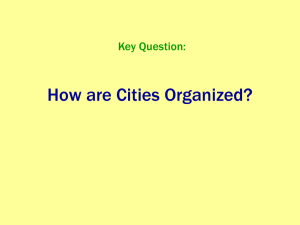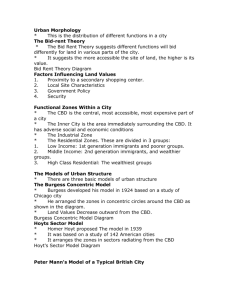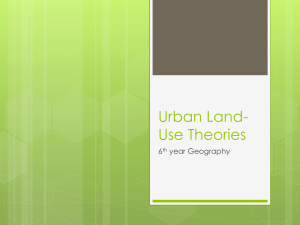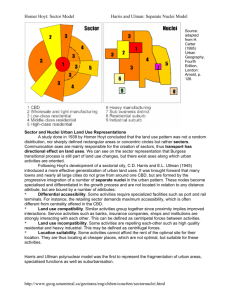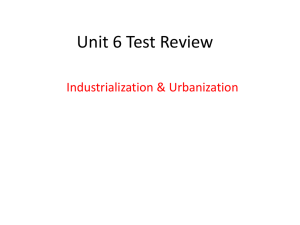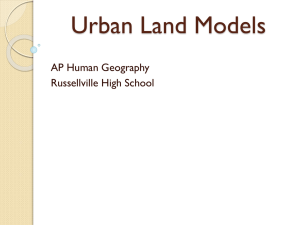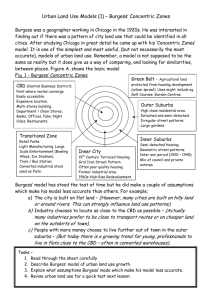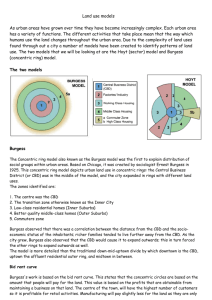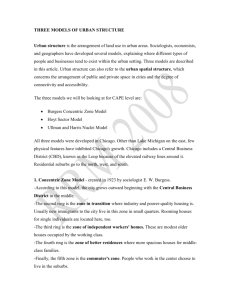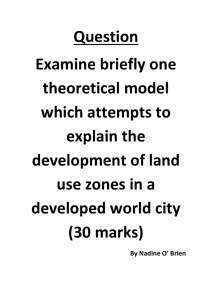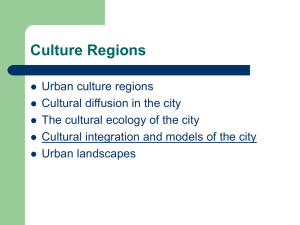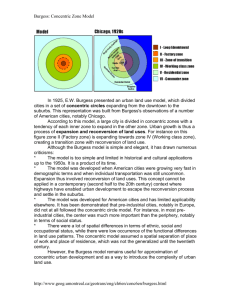THEORIES OF URBAN STRUCTURE: Models to describe the
advertisement
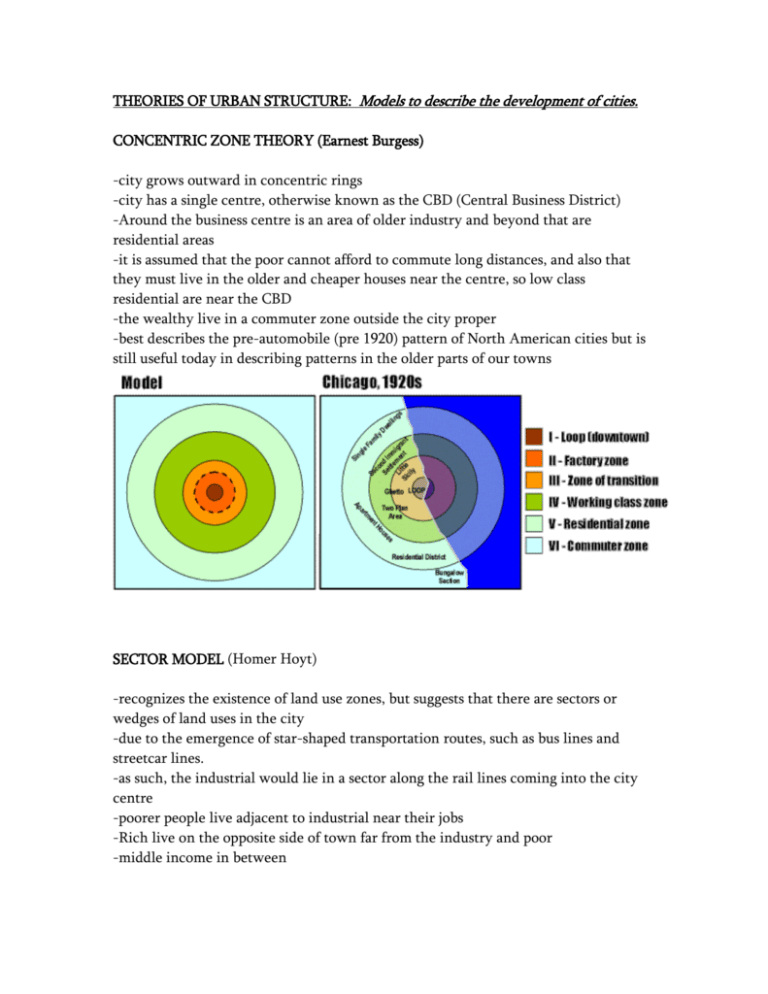
THEORIES OF URBAN STRUCTURE: Models to describe the development of cities. CONCENTRIC ZONE THEORY (Earnest Burgess) -city grows outward in concentric rings -city has a single centre, otherwise known as the CBD (Central Business District) -Around the business centre is an area of older industry and beyond that are residential areas -it is assumed that the poor cannot afford to commute long distances, and also that they must live in the older and cheaper houses near the centre, so low class residential are near the CBD -the wealthy live in a commuter zone outside the city proper -best describes the pre-automobile (pre 1920) pattern of North American cities but is still useful today in describing patterns in the older parts of our towns SECTOR MODEL (Homer Hoyt) -recognizes the existence of land use zones, but suggests that there are sectors or wedges of land uses in the city -due to the emergence of star-shaped transportation routes, such as bus lines and streetcar lines. -as such, the industrial would lie in a sector along the rail lines coming into the city centre -poorer people live adjacent to industrial near their jobs -Rich live on the opposite side of town far from the industry and poor -middle income in between MULTIPLE NUCLEI MODEL (Chauncy Harris and Edward Ullman) -refinement of first two, but incorporates outlying shopping malls, industrial areas and large residential suburbs -developed only with the use of automobiles, mostly since 1945 -CBD no longer has a monopoly on retail and commercial activities since outlying malls and industrial parks compete with it. -industry also moves to the edge of the city where land is cheaper Three Generalizations of Urban Structure Upper Left: Burgess' Concentric Zone Model; Upper Right: Hoyt's Sector Model; Bottom Left: Harris and Ullman Multiple Nuclei Model. Graphic repared by Department of Geography and Earth Sciences, University of North Carolina at Charlotte. “Canadians and their activities are becoming more and more concentrated in a hundred or so urban areas which occupy less than 1% of the land area.” What is a city? Central Place – is defined as any place offering a good or service for sale. This can range from a local store to a conurbation. Hamlet: less than 100 people Village: between 100 and 1000 people Town: between 1000 and 10 000 people City: between 10 000 and 1 000 000 people Metropolis: between 1 000 000 and 10 000 000 people Megalopolis: over 10 000 000 people Conurbation: several megalopolises and metropolises joined together with a total population over 20 000 000. Example BosNyWash In Canada, any central place over 100 000 people is called a Census Metropolitan Area or CMA. Where are cities located? SITE – the physical/natural characteristics and exact location of the community itself. Ie: on the coast, at the junction of two rivers, in a valley, on a bay, in the mountains SITUATION – refers to the features of the region that surround the specific settlement. The situation may include factors such as economic capability, relation to other central places, transportation and direction. The situation includes a much larger area than does the site. Ie: accessible by water, NW of the river, west of Toronto
